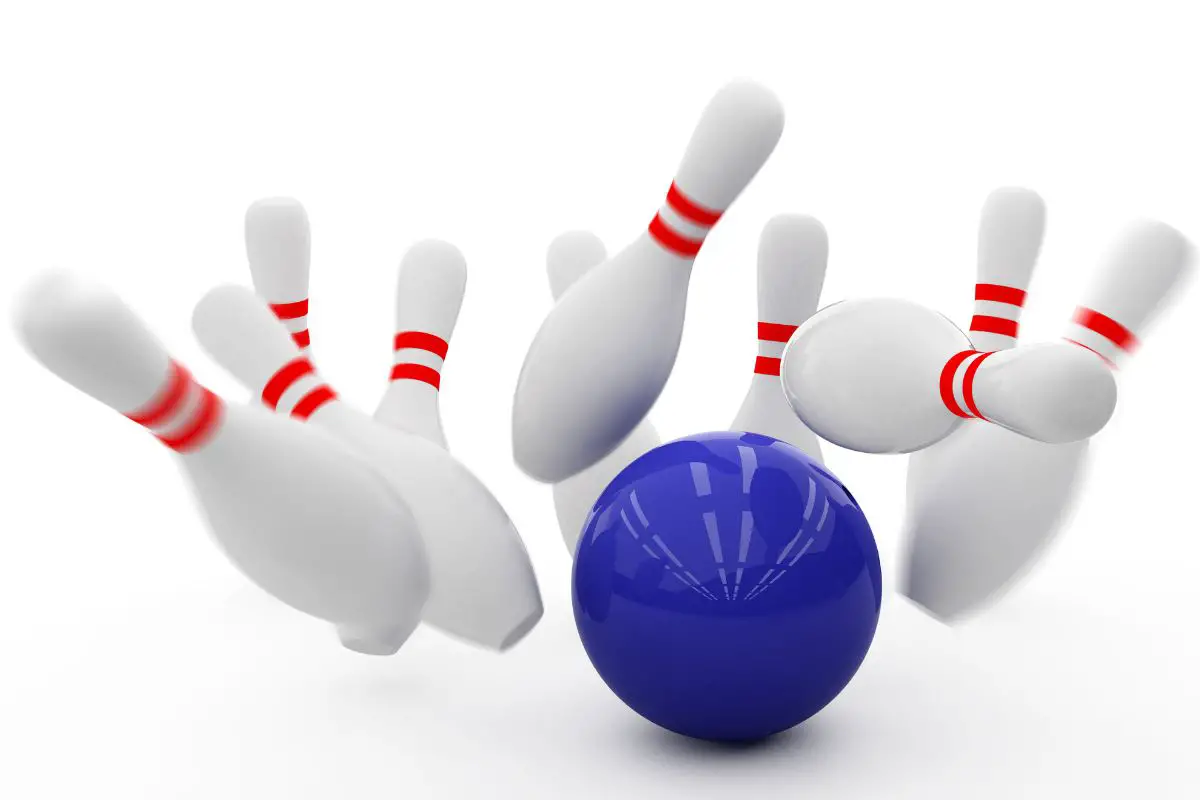When thinking of bowling, the main object that pops into most people’s heads is the bowling ball, and this makes sense since the entire game revolves around this object and how the bowler throws it.
However, just as important are the bowling pins that are used for actually scoring a game and testing a bowler’s accuracy.

Bowling pins have a long history dating back centuries. However, over the years, they have altered and changed to adapt to the modern game, meaning their weight and height specifically have changed quite a bit.
Below, we have taken a deep dive into the average weight and height of bowling pins and why this matters when you’re on the lanes.
Why Does The Weight Of A Bowling Pin Matter?
The weight of a bowling pin will majorly affect how easy it is to be knocked over, and this is a massive deal in bowling.
Before the modernized rules began forming in the 20th century in America, essentially anything and everything was used as pins when bowling; however, much of this was very light wooden or stone objects, meaning when a ball knocked one over, it would often fly into the others making it extremely easy to hit a strike.
Even a gust of wind could knock down a few pins at a time, and the bowlers would usually still add this to their score.
It becomes effortless to score when the pins are lighter since players can knock them down far more easily, which is usually the case in beginner-specific matches. Heavier bowling pins make the game more competitive and are more tuned to the standard way of playing the game.
What Is The Average Weight Of A Bowling Pin Today?
Bowling has become much more modernized and fair, and bowling pins have been included in this trend. According to the USBC (United States Bowling Congress), a standard bowling pin should weigh around 3 lbs and 6 ounces; on some occasions, however, it can be 2-4 ounces less.
Most bowling pins that you can find in a bowling lane will often be around this 3-pound mark or sometimes just less. However, this does depend on the manufacturer.
The general rule of thumb is that a pin should weigh approximately one-quarter of the heaviest bowling ball to make the game fair, but also teach bowlers what their most preferred ball weights might be for knocking down pins in regular bowling lanes.
Other Bowling Pin Weights
The 3-pound average is often linked with ten-pins used in standard games; this requires a decent knowledge of the technique and amount of force to use to score a strike.
Duckpins, however, are used for duckpin bowling, which can be a little easier for beginners, usually weighing around 1.5 pounds. This makes them incredibly light and short, perfect for bowlers to practice their swing and technique before moving onto heavier pins in regular ten-pin games.
Fivepins are also slightly lighter than regular ten-pins, usually around 2 pounds on average, making them another great tool for some target practice.
Candlepin bowling is a unique variant of bowling, which is great fun for all ages to get involved with. However, it also has an extremely high skill ceiling, being very hard to master. Each pin in candlepin bowling is around 2.40 pounds, making them a little lighter than ten-pins, but not by a large degree.
What Makes A Bowling Pin Heavy?
Depending on how you want to bowl and the type of game you want to play, pin weights can vary quite a bit, and a few factors make them lighter or heavier.
Size is one factor; a taller pin will be much heavier than a smaller one. However, this can be a bit different if a pin is smaller but has a broader bottom with the main weight center at the top; this can cause the pin to weigh a bit more.
The material is also essential; plastic is usually used to make pins lighter, while wooden pins or ones mixed between wood and plastic are generally used for more competitive scenarios since they are heavier to knock down.
What Is The Maximum Weight Of A Bowling Pin?
These weight limits are put into place to strike the perfect balance between pins being too easy or difficult to knock down.
However, this is not always replicated in all bowling alleys; if you find a lane using heavier pins than the average or much lighter ones, they are probably doing so to either raise the competitive levels or are beginners just trying to get into the swing of throwing a ball and learning new techniques.
In standard games and mostly all regular bowling lanes, however, the weight of a bowling pin should never be more than 3 lbs; this is seen as exceeding the limit and being too heavy for everyone involved to have an enjoyable experience.
In terms of minimum weight, this largely follows the same precedent; in standard games, ten-pins are expected to be no less than 3 lbs or 1500 grams.
It is, however, much more common to find local lanes use lighter pins as opposed to heavier ones since they can be found and manufactured far easier and are a common way for those just getting started in bowling to become accustomed to the different scores and bowling methods without having to worry about getting that perfect strike every time.
How Tall Is The Average Bowling Pin?
The actual size of a pin is also significant as it can make a game easier or more competitive, depending on how tall it can be. According to the United States Bowling Congress, a standard ten-pin must be 4.7 inches in overall diameter with an average height of 14 inches.
In ten-pin bowling, the pins will, therefore, usually hover between 13 and 15 inches, which makes the pins sturdy enough not to fall over too easily but still not rock solid to the point where they can’t be knocked down, it’s the perfect middle point. The average ten-pin is also often around 4 to 5 inches wide.
Regarding the other kinds of pins, candlepins tend to be slightly taller at around 15 inches, while duckpins are usually around 9 inches, making them easier to knock down.
An important point to note is that ten-pin heights vary from country to country; for example, in Japan, the standard height of a ten-pin is 8 inches. This is because, in Japan, all ages will play the same game of bowling together, making it fairer for everyone involved.
Frequently Asked Questions
How Heavy Is The Average Bowling Ball?
When at a bowling alley, you will have a few weight options to choose from to fit your bowling style, and these balls will often range from 6 to 16 pounds.
Balls from 6 to 8 pounds are usually considered more lightweight and won’t put as much strain on the arms. However, you can use a ball heavier than 8 pounds to gain that extra power to knock down as many pins as possible at the other side of the lane.
Summary
Most bowling alleys you can visit will ensure their pins are no lighter or heavier than 3 pounds to make sure the game remains consistent and fair; however, in your own time, never be afraid to experiment with pins made of lighter or heavier materials to either practice or make a day of bowling just that bit more competitive.
- A Comprehensive Guide to the Top Bowling Movies of All Time - December 23, 2023
- Bowling Shoes Selection Guide: How to Choose the Right Fit - September 27, 2023
- Bowling Ball Buying Guide: How to Choose the Right Ball for You - September 23, 2023









